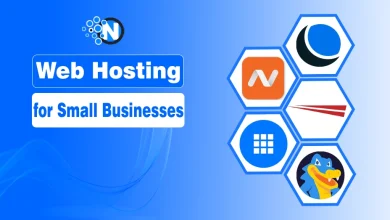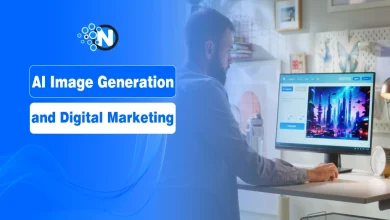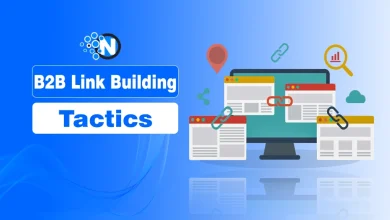What Are Display Ads? Their Role in Boosting Organic Reach

In the world of online marketing, businesses are no longer fighting for physical space. They are fighting for attention. Whether you run an e-commerce store, a personal blog, or a corporate website, visibility determines growth. One of the most effective ways to stay visible in today’s competitive digital environment is through display ads.
When used correctly, display advertisements not only generate direct clicks but also improve brand recall, increase session duration, and indirectly boost organic reach. In this guide, I will provide complete details related to display ads and how they play their part in enhancing the brand’s organic reach and achieving the targeted goals.
What Are Display Ads?
Display ads are visual advertisements that appear across websites, mobile apps, and social platforms.
Unlike text-based search ads that appear when a user actively searches for something, display ads proactively reach users while they are scrolling, reading, or browsing other content. Display ads can be images, banners, animated graphics, or videos.
They appear on other websites through advertising networks such as Google Display Network (GDN), Meta Audience Network, and other programmatic ad platforms.
In simplest terms:
Display ads are digital visual advertisements designed to attract attention and drive awareness.
Display advertising is often misunderstood. Many marketers assume display ads only help with paid traffic. In reality, display ads play a strategic role in improving brand awareness, which leads to higher search demand and better organic rankings over time.
The primary purpose of display ads is not to convert immediately. Instead, they build brand visibility, shape first impressions, and increase recognition.
How Display Ads Work?
Display advertising operates through a system of automated bidding, real-time placements, and user interest targeting.

When a user visits a website, the ad space on that page enters a real-time auction.
The advertising network evaluates which advertiser is willing to pay the most for that space and delivers the winning ad. This process takes milliseconds. The 3 key components of display ads are:
- Ad Creatives: It includes banner images, visuals, animations, and videos. Creatives must be attractive enough to grab attention instantly.
Targeting: Advertisers choose who will see the ad based on location, interests, past behavior, device type, or demographic information.
Placements: Ads appear on websites and apps that belong to an advertising network. For example, Google Display Network claims to reach more than 90% of internet users worldwide.
Display ads rely on data-driven targeting. Advertising platforms gather user behavior information such as:
- Pages they visit frequently
- Products they view on e-commerce platforms
- Movies they watch
- Searches they perform on Google or social media
All of this allows display ads to show up at the right moment to the right person.
Different Types of Display Ads
Display ads come in various formats. Each format serves a different purpose and appeals to a different stage of the buyer’s journey. Below, I have listed the key types of display ads that can help you take charge of your business campaigns.
- Static Display Ads: Static display ads are simple images (PNG or JPG). They contain a combination of text, images, and a call-to-action button. They are used primarily for brand visibility.
- Animated or GIF Ads: These ads include movement. 3D Animation increases visual engagement and helps communicate multiple ideas within the same ad.
- Video Display Ads: These are short-form videos displayed on supported websites. They are used primarily to build high emotional engagement.
- Responsive Display Ads: Responsive ads automatically adjust their format, size, and style based on where they appear. Google’s machine learning tests different combinations to maximize performance.
- Remarketing Display Ads: These ads show up only to users who have already visited your website. They gently remind users about your brand and encourage them to return.
Key Point: A user visits your e-commerce store, views a product, and leaves. Later, when they browse another website, your product ad appears again. This is remarketing.
What are the Key Advantages of Display Advertising?
Display ads offer a variety of benefits depending on how they are used. Even if users do not click on the ad, they see the brand, absorb the message, and develop familiarity. The primary advantages of display advertising are:
- Strong Visual Appeal: Human attention is naturally drawn to visuals more than text. Display ads leverage this psychology.
- Massive Reach: Display networks give access to millions of websites. It allows brands to increase visibility instantly.
- Retargeting Power: Remarketing increases conversions because users are reminded of what they already showed interest in.
How Display Ads Improve Organic Reach?
Most marketers judge the success of display ads only by clicks and conversions. It is a huge mistake. Display ads have a powerful secondary function that many businesses overlook. They boost organic reach and help improve long-term search visibility.
Organic growth is slow by nature. SEO requires time, effort, and consistency. But display ads accelerate the discovery phase. They introduce your brand to people who have never interacted with you before, which increases the number of people who later return through organic search.
Here is how display ads contribute to organic reach and long-term SEO growth:
1. Increases Branded Search Volume
When people repeatedly see your brand name, product, or message during their browsing experience, your brand starts occupying space in their memory. Branding experts call this cognitive familiarity.
When users are familiar with your brand, they begin searching for it directly on Google, even if they never clicked the ad. It is called branded search.
When branded searches increase, Google’s algorithm interprets this as a sign that your brand is gaining popularity and trust. Branded queries are one of the strongest signals of brand authority in search engine ranking algorithms.
- For example: Instead of searching “best running shoes,” users type “Nike running shoes.”
Here is what happens when branded searches increase:
- Google sees more people are searching specifically for your brand
- Google assumes your brand is relevant and authoritative
- And, Google begins ranking your website higher for both branded and non-branded keywords
As a result, SEO becomes easier. Organic rankings improve not just because you optimized your content, but because people are searching for you. Display ads plant the seed. Branded searches harvest the results.
2. Improves Click-Through Rates on Organic Results
Imagine two brands appearing side by side on Google search. One is completely new to the user. The other is a brand they have seen multiple times in display ads, banners, or social media apps.
Which one do they choose? Almost always, the familiar one.
When users recognize your brand name in search results, they are more likely to click your website instead of your competitors. It improves your organic click-through rate (CTR). Google tracks CTR as a part of its ranking behavior analysis.
A high CTR tells Google:
- Users find your website more relevant
- Searchers prefer your content
- Your listing satisfies their intent better than others
Over time, this improves your ranking position automatically. Even if your content is not the strongest in the top 10 results, a consistently high CTR gives Google confidence to push your page higher.
Display ads create familiarity. Familiarity influences behavior. Behavior drives rankings.
3. Reduces Bounce Rate and Improves Time on Site
SEO algorithms are smart. They don’t just measure how many people visit your website. They measure what people do after landing on your site.
If visitors leave within a few seconds, Google interprets that as a sign that your content does not match the user’s expectation. It increases bounce rate.
But when users visit your website after already seeing your brand through display ads, their behavior changes, as they:
- Stay longer
- Explore multiple pages
- Read the content instead of skimming
- Convert better (sign-up, product view, etc.)
These behaviors send positive signals to Google, like:
- Low bounce rate
- Higher time spent on site
- Higher engagement rate
All three contribute to improved rankings.
Display ads warm up the audience. A warmed-up visitor behaves differently from a cold visitor. This positive engagement boosts organic ranking performance.
4. Helps Content Go Viral
Display ads increase the likelihood of content repurposing and distribution. They expose your blog posts, videos, infographics, or landing pages to a wider audience. Even if people don’t click immediately, they remember your brand. Some come back later through:
- Organic Google searches
- Social media searches
- Direct URL visits
Once they land on your website and read your content, many share it if they find value in it. Shared content leads to organic backlinks, social media mentions, and referral traffic. All three are indicators that Google monitors to evaluate whether your content deserves a higher ranking.
Thus, display ads serve as an initial fuel that pushes your content into the market. Organic SEO capitalizes on the momentum. Display builds visibility. Visibility drives shares. Shares drive authority.
5. Accelerates Domain Authority
Domain Authority (DA) is influenced by several factors, mainly:
- Number of high-quality backlinks
- Website engagement metrics
- Search demand related to your brand
Display ads indirectly influence these factors. Here is what happens:
- When more people see your brand, branded searches increase
- Higher branded search leads to higher organic CTR
- Better CTR and engagement lead to higher rankings
- Higher rankings attract backlinks from other websites
In other words, visibility attracts searches, which in turn attract traffic, which then attracts backlinks, ultimately increasing domain authority.
Display ads work like a booster shot for your organic growth. SEO is the foundation for long-term visibility, but display advertising speeds up the process by improving the signals that search engines evaluate.
Display Ads and SEO Connection
SEO and display advertising are often treated as two separate strategies. In reality, they complement each other. Display ads accelerate the early phase of brand visibility. SEO sustains long-term growth.
Without visibility, content struggles to rank. With display advertising, you build awareness, familiarity, and user interaction faster. For better understanding, you can consider display ads as ignition and SEO as fuel.
Final Thoughts
Display ads are more than just visual banners. They are a powerful tool for boosting brand awareness and indirectly improving SEO performance. Display ads bring visibility, visibility generates familiarity, familiarity drives searches, and searches fuel organic growth.
If you want sustainable growth, combine display advertising with content-driven SEO. It is the shortcut to building recognition while SEO works silently in the background.
Instead of asking, “How many clicks did I get from display ads?” Ask, “How much brand demand did I create because of display ads?”
That shift in thinking makes all the difference.




